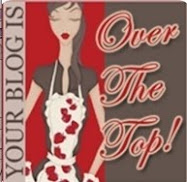 |
| Watercolor in moleskine, approx. 5" x 7" |
This is almost true. I rarely give in to buying whims. Even though I had bought it a week before, I had no regrets, and I have no regrets now. I am still thrilled with the purchase.
"What is it?" my friend asked.
I gestured with flourish to the spot on my shelf where the object has been displayed like a museum piece.
"A chopstick?" my friend asked.
I was horrified.
"Of course not," I said. "It's a wand!" A thin foot-long slightly tapered charcoal-colored wand, with intricate runes carved on the sides. Certainly not a chopstick; if anything, a fine baton.
I bought it at the Wizarding World of Harry Potter in Orlando. It is Sirius Black's wand which means it is a symbol of loyalty and sacrifice for all that is good. But mostly, for me, it represents imagination, master storytelling, and unbridled creativity. And magic, of course.
My friend doesn't have to understand.
I am lucky. I create a little magic every day. And each day it takes a new form. I begin with a blank sheet of paper.
Sometimes I am amazed at what a sheet of paper or canvas can display. Other times not so much. To have the ability to wield a pen or a brush and create an image that wasn't there before: that, I could tell my friend, is magic. I don't need a wand. But it is nice to have the reminder on my shelf of so much that I admire, and of so much that inspires me.
The truth, of course, is that no wave of a wand will do. To imagine effectively we must exercise the mind. To create we must exercise the hand.
I have been nearly obsessed lately with the Helga watercolors by Andrew Wyeth. Andrew Wyeth employed drybrush in many of his pictures, in which most of the moisture is squeezed out of the brush, to create his emotion-laden images. I have read forums online in which watercolorists have been both baffled and amazed by his results. [Wyeth's wand: Stupefy! (You can see a list of Harry Potter spells here.)]
At least a year ago I found an article about his technique which you can read here. I revisited it recently. According to the article, part of how Andrew Wyeth described his process was this: "You weave the layers of dry brush over and within the broad washes of watercolor."
I hadn't caught it the first few times I read the article, but it made sense - he employed both washes and drybrush. So as a study in my moleskine above, I started the face of the woman above as a wash, almost as I always would. Only then did I employ the drybrush technique. For me it was a very slow process - a gradual build up of transparent layers, almost like sculpting, and I was amazed at how the areas in the face began to acquire depth. This was very different than using the other watercolor methods.
I reached a point where I felt the entire face needed more color, and again thought of the above quote. Andrew Wyeth did not simply lay a wash and then apply drybrush, but employed a weaving of the two. So I laid a wash over what I had done, unsure whether that would unsettle everything. And it worked! And then resumed the drybrush. So this was a successful experiment I think.
I don't know that I have done anything like what Andrew Wyeth has done in technique in that I have never been able to examine an original Wyeth piece (I am a mere fledgling artist, self-taught/self-teaching, and even were I to stumble somewhere close, I am nowhere approaching the quality of his work, of course.) One great thing about Andrew Wyeth was that he did not feel limited by any one watercolor technique and felt that he could use several in one piece. So I tried to do the same.
Except for some initial trials, I used the watercolor medium, gum arabic, for the first time in this picture - and only in the hair. The description on the bottle says gum arabic "increases brilliance, glosses and transparency of water colours. Controls spread of wet on wet. Reduces staining." I bought the gum arabic because I have not always been satisfied with the vibrancy of the colors. I do not see that the colors are especially more vibrant than elsewhere on the page. The texture of the paint did seem to change, and I did note that if water was placed on the hair after it dried, then the hair would vanish [Evanesco!], so staining was definitely reduced.
It is interesting that in drawing any person, problems can result, sometimes in the most surprising places. In this one I had a problem with the shape of the shoulders of all things - I mean who ever thinks about the shoulders? (Except perhaps Henry Raleigh whom you can see in this post of the excellent "Illustration Art" blog, and whose work so impressed me that I could not draw for two days). It just shows that you can't ignore any part of the body, and must learn - eventually - to control each and every part. [Imperio!]
There is no substitute for practice. Only then will I learn.
So join me, won't you? Pick up your brush, your pencil, your pen, or whatever it is that you use, and repeat after me: Wingardium Leviosa! (Make sure your emphasis is on the "o".) And may all of your creative efforts hereafter rise to new heights.





.jpg)

